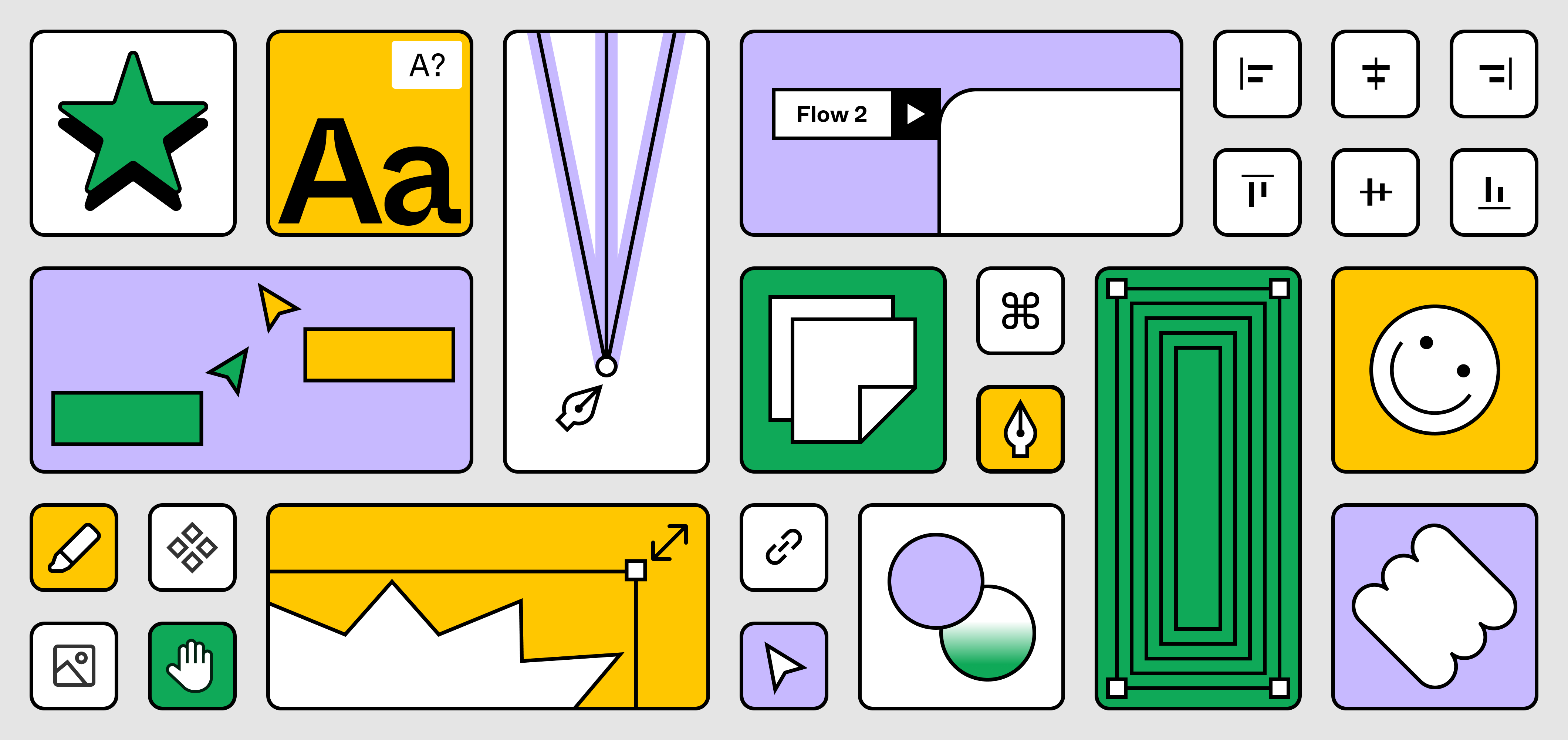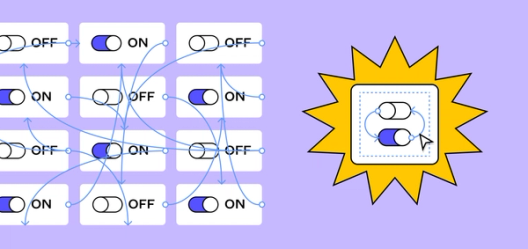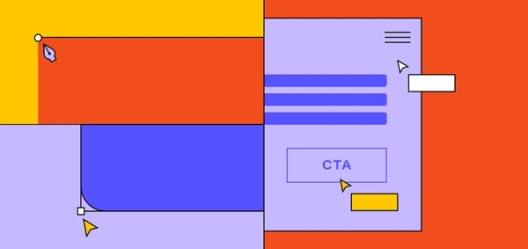Why cultivating a prototyping culture will help you build better products



Prototyping, once an eleventh-hour nice-to-have, has risen to become a critical tool at multiple points in the product development workflow.
Artwork by Leandro Castelao.
Picture this: You open Figma with a flash of inspiration or a problem to solve. You start with a blank canvas, creating shapes and manipulating colors, crafting a design you’re eager to share. You ping it to your engineering partner, but as they start building it, they hit a snag. Something isn’t working as expected. Perhaps it’s navigation complexities or user testing stumbling blocks—issues that would have been apparent earlier if there was a way to foresee them. This is where prototyping becomes invaluable.
A prototype is a mock-up or demo of what a product will look like and is often used to test a concept, then iterate on it. Because prototypes can be interactive, they are able to represent an interaction or experience with enough fidelity to allow the team to decide on its value before committing hours to developing or adding visual design polish.
Prototyping creates an interactive experience that brings the product to life, revealing interactions that might be overlooked in static designs. When integrated into the product development process early, it saves engineering time and streamlines workflows. Adopting a prototyping culture fosters innovation.

The power of prototyping
Rapid experimentation enables teams to generate—and validate—multiple ideas quickly, without requiring additional development cycles. That means that teams can go wide before narrowing in, which leads to more out-of-the-box experience design. What’s more, the proof-of-concepts help sell ideas upwards more quickly, saving time for the team and for stakeholders.
As Airbnb Co-founder and CEO Brian Chesky put it at Config 2023: “There’s a whole new generation of designers that aren’t going to work for engineers. They’re going to sit alongside engineers. They’re not going to be told what to do by product managers.”
This approach transforms the dynamic of project buy-in. We’ve seen how designers with advanced prototyping tools overcome obstacles and secure buy-in for critical initiatives, influencing business and product decisions. By presenting interactive solutions and sharing prototypes that effectively communicate their vision, designers better advocate for their ideas.

For senior-level design talent seeking new roles, a prototyping culture signals a company’s commitment to innovation and design. It’s an indicator of a forward-thinking organization, one that values creativity over sheer practicality and is always on the lookout for the next big breakthrough.
Cultivating a prototyping culture
Figma Product Designer Nikolas Klein writes about the different stages that design teams go through as they grow and develop their systems, providing examples from companies like Airbnb, Meta, and Netflix.
Today’s surge in prototyping culture mirrors what we observed with design systems a decade ago. As prototyping tools become more accessible, educational programs are being developed to harness their potential. Lyft is an example of one such company, which has incorporated a strong emphasis on prototyping in their design program. They encourage teams to move beyond static designs, using tools like videos, GIFs, and interactive prototypes to convey ideas more effectively and integrate user feedback rapidly into product reviews.

Nikolas Klein and Garrett Miller talk about prototyping culture and share a behind-the-scenes look of the lead-up to launching advanced prototyping with "The Deep Dive" podcast.
To foster a culture of prototyping, organizations must prioritize time and resources to develop these skills. The goal is to integrate prototyping seamlessly into the workflow, making it a fun and essential aspect rather than a hindrance. The shift from viewing prototyping as an optional final step to an integral part of the design process is crucial for companies focused on design-driven product development.
Cultivating a company-wide culture is hard. To instill a stronger security culture, Wealthsimple established “security champions.”
Building a thriving culture requires full buy-in at every level. Individual contributors should aspire to master prototyping skills, while leadership needs to recognize and advocate for its value in efficiency and decision-making. If those groups aren’t aligned, then the whole effort will fall flat (kind of like a non-interactive prototype). Leadership should create time and space for prototyping, and explicitly ask teams to build this step into their process.
Innovative companies embed this commitment into their core objectives. For example, companies have initiated programs focusing on employees interested in prototyping, helping them hone their skills and apply them in critical reviews. Scaling these efforts includes integrating the acquired knowledge into broader training and development programs.
Rewriting the product development process
While we’ve already debunked the myth of a linear product development process, introducing prototyping sooner adds yet more twists and turns.
Prototyping culture reshapes not just the role of designers, but the entire product development process. By quickly uncovering potential hurdles and evaluating alternatives, prototyping allows designers to bypass known issues and dive directly into the solution space. From there, they can go further—exploring new, better ideas that they might not have encountered by simply iterating in a static file. Once they arrive at a prototype that looks and acts the way they want it to, they can then work backward, creating the necessary deliverables for the final product with greater clarity and precision.
This agile approach mirrors the workflow of many developers today. When faced with a complex challenge, many developers devise quick solutions to get to the next problem faster. By the time they reach a model that looks and acts the way they want it to, they’ve also developed a better understanding of the entire project scope and potential pathways to building out the final product. They then go back and spend the next five months actually building those things, knowing which challenges they’re likely to run into along the way.

But the product development process is also about working with everyone. With increased access to prototyping tools, the keys to the prototyping kingdom are now up for grabs. People from a variety of disciplines can also create prototypes without having to rely on their design or development peers. And bring the magic of multiplayer into the mix, and entire teams can collaborate on a prototype together to fine tune and iterate in the same file.
The future of prototyping
Jon Kaplan, Nikolas Klein, Chia Amisola, and Garrett Miller, members of Figma’s Prototyping team, speak on advanced prototyping features at Config 2023.
In the words of Figma’s Chief Technology Officer Kris Rasmussen: “The most effective makers aren’t just deeply specialized in one area; they are the ones who invite a challenge and have the confidence to quickly learn new systems.”
At Figma, we believe that it takes everyone to get to the best idea. Bringing the whole team together to build and iterate on prototypes is just one way to get there. Which is why we continue to build on the variable-based prototyping features we launched at Config 2023—to realize a future where teams can rapidly iterate on any interactive idea, and support the development of strong prototyping cultures across all product teams. We will keep pushing on this and to simplify workflows so that you and your team can build better products faster.

If you’ve been thinking about taking your prototypes to the next level, check out Designer Advocate Ana Boyer’s Figma prototype challenge: 15 tips in 15 days, a two-week prototyping challenge to get started with advanced prototyping techniques in Figma.
The future of prototyping is boundless. If you’ve never tried to prototype, start here. We can’t wait to see what you build.



